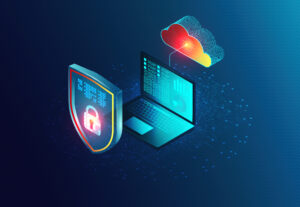As an enterprise IoT architect, you understand the immense complexity of deploying and managing IoT ecosystems within large-scale organizations. With hundreds or even thousands of IoT devices generating data across global locations, the IoT cloud platform forms the central nervous system, enabling secure connectivity, remote device management, data ingestion, and analytics at scale.
This article explores how leading IoT cloud platforms can provide the core infrastructure to seamlessly orchestrate diverse devices and data networks to unlock transformative business value. We discuss key capabilities, including connectivity management, device management, data ingestion, analytics, and machine learning to provide actionable insights. With the right cloud platform, you can architect solutions to harness IoT innovation while maintaining robust security, scalability, and reliability. Read on to explore how connectivity in the cloud is critical to successfully implementing enterprise-wide IoT.
1. The Central Role of Cloud Platforms in Enterprise IoT
Scalability and Flexibility
- For large enterprises deploying IoT solutions across locations, cloud platforms provide the scalability and flexibility to connect vast device ecosystems. Cloud services can scale on-demand as more connected devices come online, enabling enterprises to deploy IoT networks of any size. The cloud also offers flexibility in adapting IoT systems to changing needs.
Integration and Interoperability
- Cloud platforms facilitate integration between IoT solutions and existing enterprise IT systems. Cloud services provide APIs and software tools to help enterprises integrate IoT data with databases, analytics platforms, and business applications. The cloud also enables interoperability between different IoT solutions, allowing enterprises to leverage data from various devices and networks.
Reliability and Security
- Enterprises require robust, secure platforms to manage mission-critical IoT solutions. Cloud providers offer a reliable infrastructure with service level agreements ensuring high availability. They also provide a range of security controls to safeguard IoT data and systems, including identity and access management, data encryption, and threat detection tools. For enterprises, the cloud delivers the reliability and security required for business-critical IoT deployments.
Cost and Operational Efficiency
- For many enterprises, cloud platforms reduce the cost and complexity of deploying IoT compared to on-premise infrastructure. Cloud services eliminate the need for enterprises to purchase and maintain their hardware. They also provide various managed services to handle routine operational tasks like monitoring, maintenance, and updates. By leveraging the cloud, enterprises can implement IoT cost-effectively while minimizing the operational burden.
In summary, cloud platforms play a vital role in enabling enterprise IoT. They provide the scale, flexibility, integration, reliability, security, and efficiency enterprises require for sophisticated IoT ecosystems and applications. For this reason, the cloud will remain central to enterprise IoT connectivity and orchestration.

2. Key Benefits of Cloud-Based IoT Deployments
i. Scalability
Cloud platforms provide virtually unlimited scalability to support exponential growth in connected devices. As an enterprise’s IoT ecosystem expands from hundreds to thousands of endpoints, the cloud can instantly scale compute, storage, and networking resources to handle the increase in data volume, traffic, and processing requirements.
ii. Flexibility
IoT cloud platforms offer flexibility to adapt to evolving needs. Whether adding a new type of sensor, updating analytics algorithms, or integrating with an emerging partner ecosystem, the cloud provides a flexible foundation to build upon. Resources can be provisioned and released on demand, with enterprises only paying for what they use.
iii. Reliability
The cloud delivers high availability and redundancy to maximize IoT solution uptime. With multiple geographically distributed data centers and disaster recovery options, cloud platforms ensure IoT data and applications are resilient in the face of outages or catastrophes. Service level agreements also guarantee a minimum level of uptime, with some providers offering 99.99% availability or higher.
iv. Data Insights
The cloud provides a centralized platform to aggregate data from distributed IoT endpoints. Advanced analytics tools can then uncover insights from the data to optimize operations, improve efficiency, enhance experiences, develop new products and services, and generate new revenue streams. Artificial intelligence and machine learning are also more easily applied in the cloud to gain predictive and prescriptive insights from IoT data.
v. Security
Leading cloud providers invest heavily in security and compliance to protect IoT solutions. With role-based access control, data encryption, key management, and other safeguards, the cloud helps secure IoT data at rest and in transit. Continuous monitoring also helps quickly detect and mitigate threats. Cloud platforms can simplify compliance through built-in controls and auditing for enterprises subject to regulations like HIPAA or GDPR.
3. Architecting Scalable and Secure IoT Solutions in the Cloud
Choosing an IoT Cloud Platform
- To effectively manage an enterprise IoT ecosystem, select a robust IoT cloud platform that can handle huge volumes of data and connected devices. The platform should offer tools for device management, connectivity, data ingestion, processing, visualization, and integration with existing enterprise systems. Consider platforms like AWS IoT, Azure IoT Hub, or Google Cloud IoT that provide fully managed services to build and deploy IoT solutions at scale.
Managing Connected Devices
- An IoT cloud platform provides device management services to securely onboard, monitor, and update deployed IoT devices. Manually managing each device becomes impossible as an enterprise’s IoT ecosystem grows to hundreds of thousands of endpoints. IoT device management services allow you to organize devices into logical groups, set security policies, deploy firmware and software updates over the air, monitor device health, and troubleshoot issues.
Ingesting and Processing IoT Data
- Massive amounts of data are generated by enterprise IoT solutions that must be reliably and securely ingested, processed, and stored. IoT cloud platforms offer data ingestion services to receive high-volume data streams from connected devices. They also provide services to filter, aggregate, and transform IoT data through rules engines and stream processing tools. Processed data can then be analyzed in real time or fed into a data lake for long-term storage and analytics.
Integrating with Enterprise Systems
- For truly impactful IoT solutions, data and insights must be integrated into existing enterprise applications and workflows. IoT cloud platforms provide integration tools and APIs to share IoT data with systems such as ERP, CRM, and data analytics platforms. With enterprise integration, IoT data can optimize key business processes, uncover new revenue opportunities, reduce costs, and gain a competitive advantage.
An IoT cloud platform lays the foundation for enterprise IoT success. It provides the core capabilities required to securely connect, manage, and extract value from large-scale IoT solutions in an efficient, scalable manner. With the right platform, enterprises can deploy innovative IoT ecosystems to transform their business.
4. Top Cloud Platforms for Enterprise IoT
As an enterprise adopts IoT solutions at scale, cloud platforms become central to deploying and managing a vast network of connected devices. The major cloud providers have built IoT platforms to help enterprises orchestrate device connectivity, collect and analyze sensor data, build applications, and enable new services.
a. AWS IoT Platform
- Amazon Web Services offers a fully managed cloud platform to connect, secure, and manage billions of IoT devices and trillions of messages. AWS IoT Platform enables bidirectional communication between internet-connected things such as sensors, actuators, embedded microcontrollers, smart appliances, and the AWS cloud. It includes device SDKs, control services, and a message broker to facilitate device connectivity and management.
b. Microsoft Azure IoT Suite
- Microsoft’s Azure IoT Suite provides preconfigured solutions to accelerate IoT project development. It includes device connectivity, device management, analytics, storage, and application services. Azure IoT Hub enables secure device connectivity and bidirectional communication between devices and Azure services. It can support millions of simultaneously connected devices. Azure IoT Suite also provides prebuilt solutions for remote monitoring, connected factory, and predictive maintenance scenarios.
c. Google Cloud IoT Platform
- Google Cloud IoT Platform enables secure device connection, management, and integration with Google Cloud AI and analytics services. It includes Cloud IoT Core to connect, authenticate, and manage IoT devices and a fully managed message broker to facilitate bidirectional communication between devices and Google Cloud. Cloud IoT Platform also provides client libraries to build software running on devices that connect to Cloud IoT Core. Integrations with TensorFlow, BigQuery, and other Google Cloud services enable advanced analytics and machine learning of IoT data.
For enterprises aiming to scale IoT solutions, cloud platforms provide a robust set of capabilities to build and operate sophisticated IoT ecosystems. With connectivity, data management, and advanced analytics in a single platform, enterprises can realize the promise of data-driven intelligence across connected products and operations. The choice of platform will depend on an enterprise’s existing technology stack and partnerships, as well as the types of IoT solutions and business outcomes that are prioritized.
5. Orchestrating Connectivity for Distributed IoT Ecosystems
Integrating Disparate Systems
- To effectively orchestrate connectivity across distributed IoT ecosystems within an enterprise, cloud platforms must seamlessly integrate with existing infrastructure and software systems. This includes integrating networking equipment, security systems, data storage solutions, and business applications. The platform should offer open APIs and software development kits to build custom integrations as needed.
Managing Connectivity Protocols
- IoT solutions use a variety of connectivity protocols, including Wi-Fi, Bluetooth, Zigbee, and Low-Power Wide-Area Networks (LPWAN) like NB-IoT or LoRaWAN. The cloud platform should support the management of devices using any of these protocols through a single interface. This includes provisioning devices, monitoring connectivity status, applying firmware and security updates, and more.
Scalability
- Enterprise IoT solutions can comprise tens or even hundreds of thousands of connected devices. The cloud platform must scale to support this volume of devices, the data they generate, and the computing resources required to analyze that data and gain insights. Platforms should leverage containerization, microservices architectures, and other scalable design principles. They should also seamlessly integrate with robust data storage and analytics solutions.
Security
- Security is paramount when sensitive data travels across networks and is stored in the cloud. The platform should offer role-based access control, data encryption, anomaly detection, and other tools to secure the IoT solution. It must also continuously monitor for vulnerabilities and threats across all distributed system components. Regular audits and penetration testing help identify risks that could compromise enterprise data or disrupt operations.
To orchestrate connectivity across distributed IoT ecosystems at scale, enterprises need a cloud platform purpose-built for managing sophisticated IoT solutions. One that integrates with existing infrastructure supports diverse connectivity protocols, is scalable by design, and has security woven into its fabric. With the right platform, enterprises can gain data-driven insights to optimize processes, reduce costs, and better serve customers.
Conclusion
The future of enterprise IoT depends on the cloud. As organizations continue to deploy connected devices across global operations, cloud platforms provide the connectivity, security, analytics, and integration needed to manage complex IoT ecosystems. To fully realize the potential of IoT, enterprises must adopt strategies that leverage the scalability of the cloud. With robust cloud management capabilities, IT teams can seamlessly orchestrate device networks, extract value from data, and deliver innovative IoT solutions. The next phase in digital transformation will be defined by how effectively enterprises harness the cloud to drive IoT innovation. With a clear cloud strategy, the possibilities are endless. The cloud empowers enterprises to execute IoT visions that once seemed out of reach, pushing the boundaries of what connected technology can accomplish.
More Stories
Alibaba’s $53 Billion AI and Cloud Investment: A Strategic Leap into the Future
As technology rapidly evolves, Alibaba’s $53 billion investment in AI and cloud computing deserves your full attention. This strategic move puts the Chinese e-commerce giant at the leading edge of a technological revolution.
CrowdStrike Elevates Cloud Defense with Real-Time AWS IAM Identity Center Threat Detection
As you navigate the complex landscape of cloud security, staying ahead of evolving threats is paramount. CrowdStrike’s latest enhancement to its Falcon Cloud Security platform introduces real-time threat detection for AWS IAM Identity Center, elevating your defense capabilities to new heights.
ASUS AiCloud Bug Exposes Home Networks to Remote Attacks
Are you aware that your home network could be at risk? A recently discovered vulnerability in ASUS AiCloud-enabled routers has sent shockwaves through the cybersecurity community. This critical flaw, identified as CVE-2025-2492, exposes your network to potential remote attacks, allowing unauthorized access to your devices.
Samsung SmartThings Evolves: AI-Powered Automation and Ambient Sensing Redefine the Smart Home Experience
Samsung SmartThings redefines your connected living experience. With the introduction of AI-powered automation and ambient sensing capabilities, SmartThings is elevating home management to unprecedented levels of sophistication and convenience.
QpiAI-Indus: India’s Quantum Leap with a 25-Qubit Superconducting Computer
QpiAI, a Bengaluru-based startup, has unveiled the QpiAI-Indus, India’s first full-stack superconducting quantum computer. This 25-qubit system represents a quantum leap for the nation’s scientific capabilities, integrating cutting-edge hardware with sophisticated software solutions.
Taiwan Secures the Skies: Chunghwa Telecom and Astranis Forge Satellite Shield
By partnering with U.S.-based Astranis, the company is set to launch Taiwan’s first dedicated communications satellite. This bold initiative not only demonstrates Taiwan’s commitment to technological advancement but also highlights the growing importance of satellite technology in ensuring network resilience.


